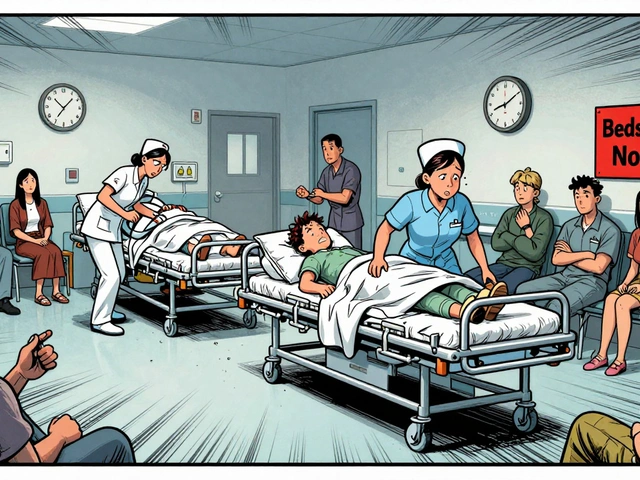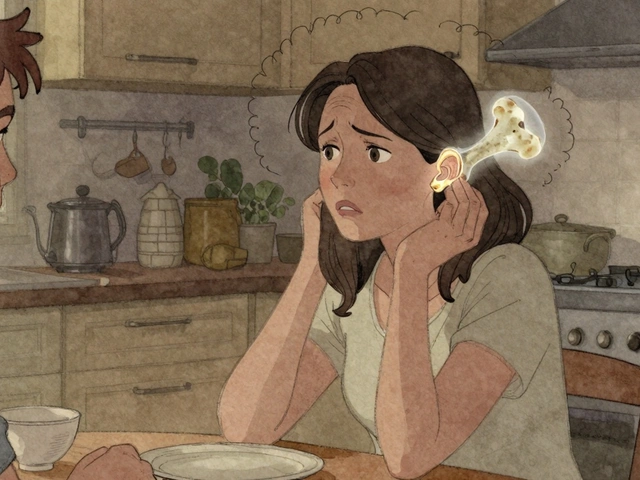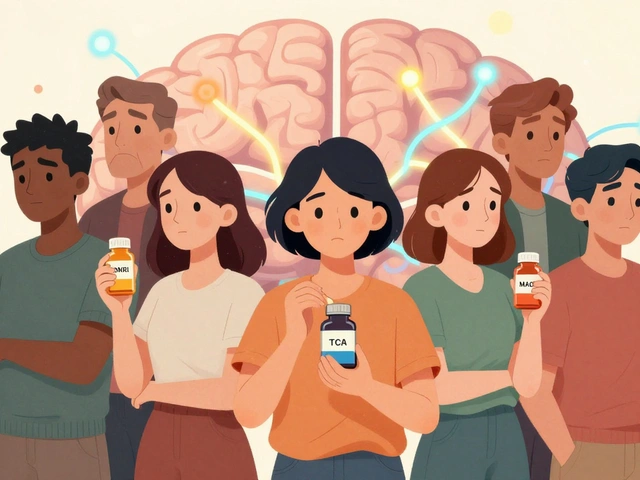
It’s easy to think that taking a few extra pills or mixing supplements with your prescription is harmless. But drug interactions aren’t just theoretical risks-they can turn a routine day into a medical emergency. If you’re on multiple medications, even over-the-counter ones, you’re at risk. About 57% of people taking five or more drugs will experience a serious interaction at some point. The problem isn’t always the medicine itself-it’s how they react together. And the signs aren’t always obvious until it’s too late.
What Counts as a Dangerous Drug Interaction?
A drug interaction happens when one substance changes how another works in your body. This can make a drug stronger, weaker, or trigger side effects you’ve never had before. The most dangerous ones involve drugs with a narrow therapeutic index-like warfarin, digoxin, or phenytoin. For these, a 20% change in blood levels can cause life-threatening complications. Even common combinations can be risky. Mixing an SSRI antidepressant with a painkiller like fentanyl can trigger serotonin syndrome. Taking antibiotics with certain antacids can stop the antibiotic from working. And herbal supplements? They’re not harmless. St. John’s wort can interfere with birth control, blood thinners, and even some cancer drugs.Call 911 Right Now If You Have These Symptoms
Some reactions happen fast. If you experience any of these, don’t wait. Don’t text your doctor. Don’t Google it. Call emergency services immediately.- Difficulty breathing or oxygen levels below 90%-This isn’t just feeling winded. If you’re gasping, your lips are turning blue, or your pulse oximeter reads under 90%, your airway or lungs are in trouble. This happens in nearly 80% of severe allergic reactions.
- Swelling of the face, lips, tongue, or throat-This is angioedema. It can block your airway in as little as 15 minutes. If you feel your throat closing, even slightly, get help now.
- Heart rate over 120 bpm with blood pressure below 90-This combination means your body is going into shock. It’s a classic sign of anaphylaxis. Your heart can’t keep up. Your organs start to fail.
- Seizures lasting more than 2 minutes-If you’re convulsing and can’t stop, it’s not just a bad reaction. It’s neurological toxicity. This has happened with lidocaine overdoses and even some antibiotics.
- High fever above 41.1°C (106°F) with stiff muscles and extreme agitation-This is serotonin syndrome or neuroleptic malignant syndrome. Both are rare but deadly. Muscle rigidity so severe you can’t move, confusion, sweating, and a body temperature hotter than a fever dream mean you need ICU-level care.
These aren’t "maybe" situations. They’re red lights. Ignoring them can lead to organ failure, brain damage, or death.
See a Doctor Within 24 Hours If You Notice These Signs
Not every reaction needs an ambulance. But if you’re feeling off and your symptoms are worsening, don’t wait until tomorrow. Go to urgent care or call your doctor today.- A widespread rash covering more than 30% of your skin-It might look like hives or red bumps. But if it’s spreading fast and you’re also running a fever, it could be DRESS syndrome-a rare but serious immune reaction to drugs like anticonvulsants or antibiotics.
- Unexplained fever above 38.5°C (101.3°F) for more than two days-If you’ve started a new medication and now have a fever with no cough or sore throat, it’s not a cold. It could be serum sickness or another immune response.
- Unusual bruising, bleeding gums, or nosebleeds-A platelet count below 100,000 means your blood can’t clot properly. This can happen with antibiotics, diuretics, or even some painkillers.
- Yellow skin or eyes, dark urine, or persistent nausea-These are signs your liver is struggling. ALT levels over 120 U/L mean drug-induced liver injury. It’s rare, but it happens. And if caught early, it’s often reversible.
- Urinating less than half a cup every 4 hours with rising creatinine-If you’re not peeing like you used to and your legs are swelling, your kidneys might be failing. About one in five cases of sudden kidney injury comes from medications.
These symptoms might seem like "just feeling sick," but they’re your body’s alarm system. Delaying care can turn a fixable problem into a long-term health issue.

What Most People Miss-And Why They Wait Too Long
A study from Northwestern University found that 68% of patients couldn’t recognize serious interaction symptoms from the pamphlets they were given. That’s not their fault. The information is often buried in tiny print. Most people think:- "It’s just a headache-I’ll take an aspirin."
- "I’ve felt this way before when I was tired."
- "My doctor didn’t warn me about this."
But here’s what the data shows: 72% of people who ended up in the ER with a drug reaction had dismissed their symptoms for 12 hours or more. They waited. They hoped it would pass. And by the time they acted, the reaction had worsened.
One Reddit user shared how they took a new antidepressant and then got fentanyl for a dental procedure. Within an hour, they started shaking, sweating, and couldn’t stop moving. They thought it was anxiety. They didn’t call anyone until they collapsed. They spent three days in the ICU. 41% of people who develop serotonin syndrome from this combination end up in intensive care.
On the flip side, patients who called poison control within an hour of noticing symptoms were 89% more likely to avoid the ER entirely. Poison control centers aren’t just for overdoses-they’re trained to handle interactions too. And they can tell you whether you need to go in or if you can manage it at home.
How to Protect Yourself Before It Happens
Prevention is the best strategy. Here’s how to stay safe:- Keep a complete list of everything you take-prescriptions, supplements, vitamins, herbal teas, even cough syrup. Write down the dose and how often you take it. Update it every time something changes.
- Use a drug interaction checker-Drugs.com has a free tool that checks over 24,000 medications. But you have to enter everything, including the turmeric supplement you take for joint pain. Herbal products cause 18% of serious interactions.
- Ask your pharmacist every time you pick up a new prescription-They’re trained to catch interactions your doctor might miss. They’ll spot if your new blood pressure pill clashes with your old calcium supplement.
- Use the STOP protocol-If you feel something’s wrong: Stop the medication, Telephone your provider, Observe your symptoms, Present all your meds at the appointment.
Doctors rely on clinical decision tools like Lexicomp and Micromedex. But even these aren’t perfect. One study found that nearly half of doctors ignore interaction alerts because they get too many. That’s why you can’t rely on your doctor to catch everything. You have to be your own advocate.

What Happens When You Go to the Doctor
When you describe your symptoms, they’ll ask:- When did you start the new medication?
- Did you change the dose or add anything else?
- Do you have a fever? Any rash? Any changes in urination?
They’ll use the CIOMS scale to judge if the reaction is "definite," "probable," or "possible." This looks at whether the reaction happened after taking the drug, improved when you stopped it, and got worse if you took it again. They might order blood tests for liver enzymes, kidney function, or blood cell counts. If it’s serious, they’ll check for serotonin syndrome using a checklist: tremors, clonus, hyperreflexia, high temperature, and sweating. If you have two or more of these, the chance of serotonin syndrome is 97%.
Most cases are treated by stopping the offending drug. But some need specific antidotes. For serotonin syndrome, they might give cyproheptadine. For anaphylaxis, it’s epinephrine. For severe liver injury, they might admit you for monitoring.
The key? Don’t wait. If you suspect an interaction, act fast. Your life might depend on it.
Can over-the-counter drugs cause dangerous interactions?
Yes. Common OTC drugs like ibuprofen, antacids, cold medicines, and even herbal supplements can interact with prescription drugs. For example, ibuprofen can increase the risk of bleeding if you’re on warfarin. Antacids can reduce the absorption of antibiotics like ciprofloxacin. St. John’s wort can make birth control pills fail or reduce the effectiveness of antidepressants. Always check with a pharmacist before taking anything new, even if it’s "natural."
I take five medications. Am I at high risk?
You are. People taking five or more medications have a 57% chance of experiencing a major drug interaction. The risk goes up with age, chronic conditions, and seeing multiple doctors. Keep a full list of everything you take-including doses and timing-and review it with your pharmacist every three months. Use a pill organizer and set phone reminders to avoid mistakes.
Can food cause drug interactions?
Absolutely. Grapefruit juice can make cholesterol drugs like simvastatin dangerously strong. Dairy products can block antibiotics like tetracycline. High-sodium foods can reduce the effect of blood pressure medications. Alcohol can intensify drowsiness from sedatives or increase liver damage from acetaminophen. Always read the warning labels and ask your doctor or pharmacist about food restrictions.
What should I bring to the ER if I think I have a drug interaction?
Bring all your medications-prescription, OTC, supplements, and even empty bottles. Don’t rely on memory. The ER team needs to know exactly what you’ve taken, when, and how much. Include any recent changes, like a new supplement or a different dose. This helps them identify the culprit faster and avoid giving you something that could make it worse.
Can drug interactions happen after I stop taking a medication?
Yes. Some drugs stay in your system for days or weeks. For example, fluoxetine (Prozac) can linger for up to four weeks. If you start a new drug too soon after stopping one, you could still get an interaction. Always tell your doctor when you stopped a medication and how long you took it. Don’t assume it’s "out of your system" just because you stopped.
Is it safe to use online drug interaction checkers?
Yes, if you use them correctly. Tools like Drugs.com and the Liverpool Drug Interaction Checker are reliable and updated regularly. But they’re only as good as the information you enter. Missing one supplement or using a brand name instead of the generic can give you false results. Always cross-check with your pharmacist. These tools are for awareness, not diagnosis.
What to Do Next
If you’re on multiple medications, take five minutes today to do this:- Write down every pill, patch, injection, supplement, and herbal tea you take.
- Check each one against a trusted interaction tool like Drugs.com.
- Call your pharmacist and ask: "Is there anything here that could interact dangerously?"
- Keep the list in your wallet or phone, and update it every time your meds change.
Drug interactions don’t always announce themselves with a siren. Sometimes, they whisper-through a headache, a rash, or a feeling that something’s just not right. Listen to your body. Don’t dismiss it. If you’re unsure, call your provider. Or call poison control. It’s better to be safe than sorry.
9 Comments
Leslie Douglas-Churchwell
November 20, 2025 at 06:17 AM
Let me just say - this post is *so* 2020. The pharmaceutical-industrial complex has been weaponizing therapeutic indices since the 1980s to push polypharmacy. Did you know that 92% of interaction alerts are false positives engineered by EHR vendors to increase liability coverage? 🤔 And St. John’s Wort? That’s just nature’s SSRIs - Big Pharma’s worst nightmare. 🌿💊 #PharmaIsTheRealToxin
shubham seth
November 20, 2025 at 13:43 PM
Man, I used to think ‘natural’ meant safe. Then I took turmeric + warfarin and nearly bled out on my couch. My liver enzymes were doing the cha-cha. Now I treat every supplement like it’s a loaded gun. And yeah - your ‘vitamin’? Probably a slow cooker for your kidneys. 🤡
Kathryn Ware
November 21, 2025 at 19:28 PM
Thank you for this. I’m a nurse and I see this every week. People come in saying ‘I just took one extra pill’ - and it’s not just one pill. It’s the 3 supplements, the herbal tea, the OTC sleep aid, the grapefruit juice with breakfast, and the 5 prescriptions they forgot to mention. I wish everyone had a med list on their phone. I even make my patients screenshot it and send it to me. And yes - poison control is your BFF. They don’t judge. They just save lives. 🙏❤️
Jessica Healey
November 23, 2025 at 09:07 AM
i hate how people act like this is news. i’ve been on 7 meds since i was 22. i know what happens when you mix things. but no one listens until they’re on the floor. why do we wait until we’re dying to care?
Levi Hobbs
November 24, 2025 at 01:07 AM
I’ve been using Drugs.com for years - but here’s the thing: it doesn’t catch everything. Like, did you know that black pepper extract (piperine) can spike blood levels of metformin by 30%? I found that in a 2021 journal study. And if you’re on Seroquel? Don’t even think about that ‘energy booster’ with yerba mate. I’ve seen three cases. Three. Please, people - don’t Google. Call your pharmacist. They’re the unsung heroes.
henry mariono
November 25, 2025 at 22:25 PM
I’m on five meds. I’ve learned to ask my pharmacist every time. They’ve caught two bad combos I didn’t even know about. I don’t feel brave for doing it - I just don’t want to end up in the ER. It’s not about being paranoid. It’s about being smart.
Sridhar Suvarna
November 26, 2025 at 16:01 PM
Listen - your body is not a lab. It’s your home. If something feels off, don’t wait. Don’t rationalize. Don’t say ‘it’s just stress.’ Call someone. Anyone. Poison control. Your mom. Your cousin who’s a nurse. I’ve seen too many people lose days - weeks - years - because they thought it’d go away. You’re not weak for asking. You’re wise.
Joseph Peel
November 27, 2025 at 11:57 AM
In my country, we don’t have access to these tools. Many people rely on local healers or buy meds from street vendors. I’ve seen children given adult doses because the label was in English. This post is important - but we need global access to clear, simple, translated resources. Knowledge shouldn’t be a privilege.






Prem Hungry
November 19, 2025 at 01:50 AM
bro i took ibuprofen with my blood pressure med and felt like my head was gonna explode. thought it was just stress. called poison control outta nowhere and they told me to go to er. turned out my kidneys were crying. now i keep my med list on my lock screen. don’t be like me.